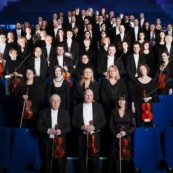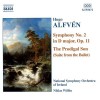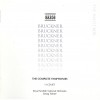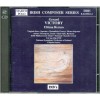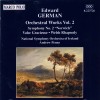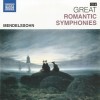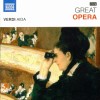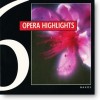| Voice/Instrument: |
Biography
British ascendancy in Ireland put concert music in the hands of the wealthy, primarily English, ruling class, which followed London's tastes. Tellingly, the major musical event in Irish classical music history is the premiere performance of Handel's Messiah. Concerts were put together mostly by an ever-shifting group of charitable societies. The first effort to found a permanent symphony orchestra in Dublin did not occur until 1899, when Michele Esposito, an Italian professor of piano at the Royal Irish Academy of Music, founded the 70-piece Dublin Orchestral Society, which lasted until the outbreak of World War I.
After the foundation of the Irish Free State, the Royal Dublin Society gave concerts. A 1927 effort to revive the Orchestral Society was undertaken, but did not last long.
Meanwhile, in 1926, a national radio channel began, based in Dublin. It hired staff musicians, who often played together on the radio and in concert as a chamber orchestra. String players from the radio, wind players from the Army School of Music, and other musicians played as the Dublin Philharmonic Society under the direction of Col. Fritz Brase, head of the Army School from 1927.
In 1947, the broadcasting authority, now called Radio Éireann (Radio Ireland), expanded its orchestra to symphonic size by opening its membership to musicians from all over Europe. Ireland, as a neutral, had been spared damage in World War II, so musicians from the wrecked economies of a ruined Europe were easy to attract. The new orchestra was named the Radio Éireann Symphony Orchestra. Its initial conductor was Captain Michael Bowles. After he retired in 1948 (he had been conducting the small predecessor or the RÉSO for several years), the new orchestra drifted without a permanent conductor, but played for such major conductors as Jean Martinon and Hans Schmidt-Isserstedt. Finally in 1953, the orchestra found a principal conductor in Milan Horvat, who remained until 1961. In that year, Ireland added television to its broadcasting service. The name of the new organisation was to be Radio Telefís Éireann (RTÉ). The orchestra became known as the RTÉ Symphony Orchestra. By now it was, de facto, the national orchestra of Ireland and the main city orchestra of Dublin. Its new chief conductor from 1962 was Tibor Paul. He was succeeded by Albert Rosen, Colman Pearce, Bryden Thomson, and Janos Fürst.
In 1981, it found a new concert home when the National Concert Hall opened in Dublin. Also, at about the same time, it expanded its broadcasting activities. Until 1979, RTÉ had run only one radio channel and one television channel. In 1979, they established more channels, including an arts station called FM3, which aired numerous concerts by the RTÉCO. In 1989, the orchestra was expanded to the size of a large symphony orchestra, and it was renamed the National Symphony Orchestra of Ireland. Its new principal conductor was George Hurst. Kaspar de Roo took that position in 1994, followed by Alexander Anissimov; the outgoing conductor is Gerhard Markson, to be suceeded in 2010 by Alan Buribayev.
Present
The RTÉ National Symphony Orchestra now gives a 33 concert subscription season (Friday nights from September to May, broadcast live on RTÉ lyric fm), performs lighter Tuesday lunchtime and Friday evening concerts in June and July, plays an important role in Irish contemporary music through its Horizons series in January and February, and undertakes twice-yearly, one week tours of Ireland. Since 2005 the orchestra has been featured on RTÉ One's The Symphony Sessions.
Compositions
Composers' compositions
Hugo Alfven
Alfvén - Symphony No.2; The Prodigal Son (Ballet Suite) - Niklas WillénSymphony / Symphonic music





